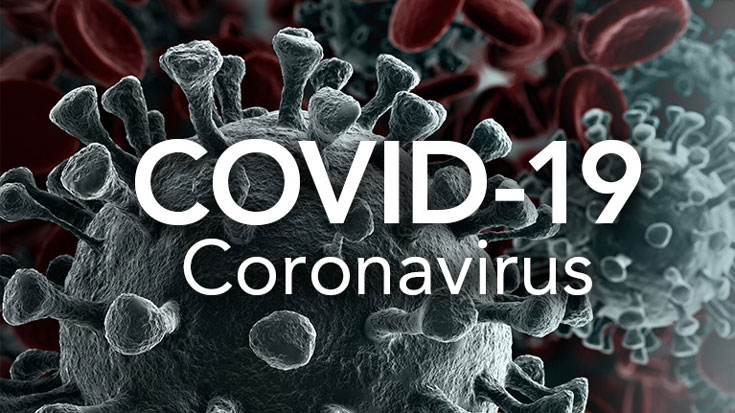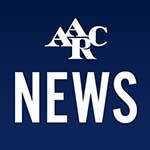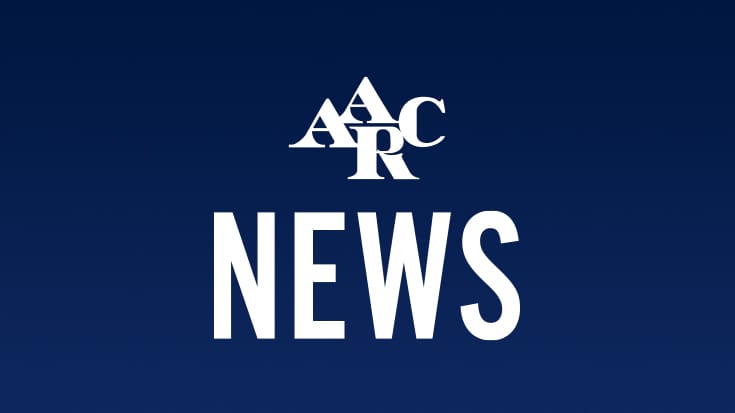

The American Association for Respiratory Care (AARC) wants all respiratory therapists to be fully prepared and equipped with the up-to-date information regarding COVID-19. As we know this is an ever-changing situation and one that can easily be miscommunicated to others. Below are links to Centers for Disease Control (CDC), which is providing the best comprehensive information. It is updated on a daily basis.
• How many people have been affected by COVID-19?
• How many people have been diagnosed/hospitalized/died in the United States?
• What are the symptoms of COVID-19?
• How do people get tested for COVID-19?
• What do I do if I’ve been exposed to COVID-19 at work?
• How do I protect myself in the community?
• How do I protect myself in the workplace? What PPE are required?
• What infection control measures should we use in the workplace?
• How do we care for COVID-19 positive persons in the home?
• Healthcare FAQ from the CDC for further reading.
COVID-19 Websites
ASPR COVID-19 Response Assistance Field Team
Assistant Secretary for Preparedness and Response
Centers for Disease Control and Prevention
CMS COVID-19 Guidance and Waivers
- Administrative Information Memos to the States and Regions (sort by posted date for most recent)
- CMS Current Emergencies Information
- CMS Programs & Payment for Care in Hospital Alternate Care Sites
- COVID-19 Emergency Declaration Health Care Providers Fact Sheet
- Policy and Memos to States and Regions (sort by date for the most recent posts)
- Coronavirus Waivers & Flexibilities
Federal Emergency Management Agency
- Coronavirus (COVID-19) Pandemic: Eligible Emergency Protective Measures
- Coronavirus (COVID-19) Response
- Coronavirus Best Practices
- Coronavirus (COVID-19) Pandemic: Emergency Medical Care
- Coronavirus (COVID-19) Pandemic: Non-Congregate Sheltering
Food and Drug Administration
- Coronavirus Disease 2019 (COVID-19)
- Coronavirus (COVID-19) Update: FDA Authorizes Moderna, Pfizer-BioNTech Bivalent COVID-19 Vaccines for Use as a Booster Dose
Healthcare Resilience Task Force
National Highway Traffic Safety Administration
National Institutes of Health
Occupational Safety and Health Administration
U.S. Department of Veterans Affairs
World Health Organization
- Coronavirus Disease (COVID-19) Pandemic
- Clinical care of severe acute respiratory infections – Tool kit
Burnout/Resiliency
NIH Guidelines: Care of the Critically Ill Adult Patient with COVID-19
- Care of Critically Ill Adult Patients with COVID-19
- COVID-19 Acute Kidney Injury and Renal Replacement Therapy
- COVID-19 Extracorporeal Membrane Oxygenation
- COVID-19 Hemodynamics
- COVID-19 Infection Control
- COVID-19 Oxygen and Ventilation
- COVID-19 Pharmacologic Interventions
Coronavirus Disease 2019 (COVID-19) Treatment Guidelines
RTs Battle Surge in COVID-19 Cases in Southwest Missouri
When the COVID-19 vaccines started to roll out late last year, hopes were high that the pandemic would soon be a reflection in our rearview mirror. But more than six months later, it’s still here. We spoke with RTs who are working in Missouri and fighting the Delta variant.
AARC News About COVID-19
The AARC Newsroom makes it easy for you to read the latest experiences of RTs and other helpful tips regarding COVID-19.
Check Out COVID-19 in The Newsroom
Updated Guidance on Aerosol-Generating Procedures
Jie Li, PhD, RRT, RRT-ACCS, RRT-NPS, FAARC, shares updated guidance on aerosol-generating procedures, particularly related to noninvasive ventilation (NIV). Li references various recent studies on this topic to support the need to reevaluate recommended guidance of NIV and patients in hypoxemic or hypercapnia respiratory failure due to COVID-19. She concludes: “The use of NIV in COVID-19 hypoxemic respiratory failure has had variable success and the decision to use NIV should be driven by efficacy versus AGP concerns.”
COVID-19 Vaccine Interim Recommendations
The Advisory Committee on Immunization Practices (ACIP) has issued interim recommendations for the use of Pfizer-BioNTech and Moderna COVID-19 vaccines for the prevention of coronavirus disease 2019 (COVID-19) in the United States. ACIP statement covers a number of categories such as age, administration, underlying conditions, immunocompromised individuals, autoimmune disorders, and more.
New FAIR Health Study Uncovers Relationship between COVID-19 Comorbidities and Mortality
A new study from FAIR Health, in collaboration with the West Health Institute and Marty Makary, MD, MPH, from Johns Hopkins University School of Medicine, shows the relationship between preexisting comorbidities of COVID-19 and mortality in privately insured patients. The study has been released as a white paper entitled Risk Factors for COVID-19 Mortality among Privately Insured Patients: A Claims Data Analysis.
National Stockpile Ventilators
In addition, we encourage respiratory therapists to view the video presentations about the Strategic National Stockpile Ventilators. In the event that there is a shortage of ventilators, these ventilators can be put into service, and it is critical that respiratory therapists know how to operate the stockpile ventilators, should the need arise. There have been several live presentations about the stockpile ventilators throughout the country hosted by the AARC in the last several years and we expect to do more in 2020.
Joint Statement on Multiple Patients on One Ventilator
The AARC issued a joint statement with various professional medical organizations from across the U.S. this week, addressing the question of placing multiple patients on one ventilator. The statement advises clinicians that sharing mechanical ventilators should not be attempted because it cannot be done safely with current equipment.
The AARC also prepared a Guidance Document to accompany the statement. Since then, the document has been updated. The authors and AARC continue to monitor the science and best practice around COVID-19, updating the Guidance Document where appropriate based on new, reliable information from those dedicated teams in those pandemic hot spots.
Multiplex Ventilation: A Simulation-based Study of Ventilating Two Patients with One Ventilator
Background: The overwhelming demand for mechanical ventilators due to COVID-19 has stimulated interest in using one ventilator for multiple patients (multiplex ventilation). Despite a plethora of information on the Internet, there is little supporting evidence and no human studies. The risk of multiplex ventilation is that ventilation and PEEP effects are largely uncontrollable and depend on the difference between patient resistance, (R) and compliance (C). It is not clear whether volume control or pressure control is safer or more effective. We designed a simulation-based study to allow complete control over the relevant variables to determine the effects of various degrees of RC imbalance on tidal volume (VT), end-expiratory lung volume (VEE), and imputed pH.
Results: Depending on differences in R and C, differences in VT ranged from 1% (equal R and C) to 79%. Differences in VEE ranged from 2% to 109%. Differences in pH ranged from 0% to 5%. Failure due to excessive tidal volume (> 8 mL/kg) did not occur. Failure due to excessive VEE difference (> 10%) was evident in 50% of patient pairs. There was no difference in failure rate between VC and PC.
Conclusions: These experiments confirmed the potential for markedly different ventilation and oxygenation for patients with uneven respiratory system impedances during multiplex ventilation. Three critical problems must be solved to minimize risk: (1) partitioning of inspiratory flow from the ventilator individually between the two patients, (2) measurement of VT delivered to each patient, and (3) provision for individual PEEP. We provide suggestions for solving these problems.
Fast Track Study Published in RESPIRATORY CARE.
Webinar: Effective Patient Care During a Pandemic
The AARC partnered with the Society of Critical Care Medicine (SCCM) to host a webcast “Maximizing the Respiratory Team Dynamic: Effective Patient Care During a Pandemic,” which took place on May 14.
This program is sponsored in part by an unrestricted educational grant from Draeger & Mylan.
CMS Issues Interim Final Rule on Clinical Indications for Certain Respiratory, Home Anticoagulation Management and Infusion Pump Policies
CMS issued an interim final rule that provides an array of temporary regulatory waivers and new rules to equip the American health care system with maximum flexibility to respond to the 2019 Novel Coronavirus (COVID-19) pandemic. The one that applies to respiratory is highlighted below:
During the PHE for the COVID-19 pandemic, it is possible that patients receiving services for respiratory related indications will be required to receive care in unexpected settings, including the home. This may be necessary as COVID-19 and other patients are shifted across healthcare settings to accommodate an increase in patient volume. Therefore, we are finalizing on an interim basis that we will not enforce the clinical indications for coverage across respiratory, home anticoagulation management and infusion pump NCDs and LCDs (including articles) allowing for maximum flexibility for practitioners to care for their patients. This enforcement discretion will only apply during the PHE for the COVID-19 pandemic. These policies include, but are not limited to:
-
- NCD 240.2 Home Oxygen.
- NCD 240.4 Continuous Positive Airway Pressure for Obstructive Sleep Apnea.
- LCD L33800 Respiratory Assist Devices (ventilators for home use).
- NCD 240.5 Intrapulmonary Percussive Ventilator.
- LCD L33797 Oxygen and Oxygen Equipment (for home use).
- NCD 190.11 Home Prothrombin Time/International Normalized Ratio (PT/INR)
Definitions:
NCD – National Coverage Determination
LCD – Local Coverage Determination
PHE – Public Health Emergency
Leading Health Care Groups Issue Urgent Call for Federal Action to Address Medical Equipment Shortages
As longstanding organizations representing and supporting those on the front lines who are risking their lives caring for the world’s most vulnerable patients, we stand united in voicing our concern over the critical shortages of medical equipment, including ventilators, test kits and all types of personal protective equipment (PPE) such as masks, face shields and gowns, to adequately address the COVID-19 public health crisis. Read the full statement.
New Video! Bilevel Devices Converted to Ventilators
Watch AARC’s video to learn about using a ventilator designed for NIV to provide invasive ventilation.
FDA’s Recommendations for Ventilator Supply Mitigation Strategies
Recognizing that the need for ventilators and ventilator-related accessories may outpace the available supply, the FDA issued recommendations based on their recent “Enforcement Policy” guidance. The FDA reminds health care professionals that your patient’s condition, the available technology, and the respiratory care expertise and experience present in your institution should be considered when choosing the appropriate ventilation for your patient. According to the FDA, their “recommendations are intended to augment, not replace, specific controls and procedures developed by health care organizations” and the CDC.
BOMA Letter Urges U.S. Surgeon General to Recognize RTs
Peter Papadakos, MD, FCCM, FCCP, FAARC, chair of the AARC Board of Medical Advisors (BOMA), sent a letter to the U.S. Surgeon General, asking for assistance in recognizing respiratory therapists. The letter brings to light the need to recognize the valuable contributions respiratory therapists make each day as they work to fight the COVID-19 virus.
“Respiratory therapists have played a key role in my career in critical care,” Dr. Papadakos said. “A number of my therapists have joined me in research projects that have lead to multiple publications in Mechanical Ventilation, ARDS and NIV. I owe you all a debt of gratitude for all you do from the neonatal ICU to the point of end of life.”
Surviving Sepsis Campaign COVID-19 Guidelines
SCCM has released its Surviving Sepsis Campaign COVID-19 guidelines to manage critically ill adults with COVID-19 in the intensive care unit (ICU). This guideline is expected to be updated as new evidence becomes available.
AARC Letters to Leaders
The AARC sent letters to U.S. Vice President Mike Pence, U.S. Congress, the Department of Health and Human Services, and the Centers for Medicare and Medicaid Services. These letters advocate for the role of the respiratory therapist during this crisis and beyond.
Letter to U.S. VP Pence
Letter to U.S. Congress
Letter to CMS & HHS
On Apr. 14, 2020, the AARC sent a letter to the U.S. Congress, urging them to recognize respiratory therapists essential health care workers. RTs deliver lifesaving care to patients with COVID-19. This letter recommends specifically recognizing RTs as essential health care providers in any legislative provision authorizing hazard pay for essential workers, like the Heroes Fund proposal, and allowing them to deliver care to Medicare beneficiaries via telehealth.
On May 5, 2020, President Schell and Dr. Peter Papadakos, Chair of AARC’s Board of Medical Advisors, reached out to Jared Kushner, Senior Advisor to the President, recommending the Administration use the expertise of the AARC in an advisory role moving forward in any decisions that impact access to ventilators.
State Licensure and Telehealth Waivers During the Pandemic
As states continue to implement emergency declarations, the Federation of State Medical Boards keeps track of details on what states are doing to lift licensing laws to permit health care professionals to work across state lines and to provide telehealth services. You may also want to check with the licensing board in your state that governs respiratory therapists.
Interview with Dr. Michael Anderson
As an authority on children’s health policy, pediatric disaster preparedness, system quality and physician workforce, Michael R. Anderson, MD, MBA, FAAP, FAARC, took a moment to speak with the AARC. He is a supporter of respiratory therapists, and a proud fellow of the AARC. In this conversation, Dr. Michael Anderson discusses COVID-19 and important aspects relevant to the respiratory therapist’s ability to provide safe and effective care.
Enable cookies to see embeded content.
Discussion From Washington State
On Mar 18, 2020, AARC Adult Acute Care Section Chair Carl Hinkson MSRC, RRT, RRT-ACCS, RRT-NPS FAARC dedicated time to a discussion of COVID-19. Hinkson and colleague Darryl Keffer RRT shared their experiences caring for patients diagnosed with COVID-19.
Enable cookies to see embeded content.
Join the COVID-19 Conversation
The AARC opened an AARConnect community dedicated to sharing COVID-19 resources and dialoguing about challenges and solutions during this outbreak. The AARConnect community is free and open to all members. Just go to the community page and join the discussion.
If you want to stay up-to-date on the latest publications, search PubMed with this automated search.
For RT tips for safety and links to members in the news on this topic go to our RTs, Thank You for Fighting COVID-19 page.
Email newsroom@aarc.org with questions or comments, we’d love to hear from you.
















